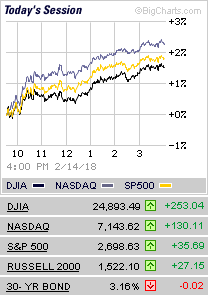The term “savings account” evokes a sense of security: When you deposit money in a bank savings account, you know it’s insured and you won’t lose it.
Other kinds of “savings accounts,” on the other hand, aren’t so safe. Think about what the financial industry calls “retirement savings accounts,” like 401(k)’s and IRAs. Or what are referred to as “college savings accounts.” When Wall Street and even the government refer to these products as savings accounts, they take on a positive association—but the term is just flat-out wrong.
We can expect true savings accounts to pay us a modest amount of interest, but most importantly, they’re a safe haven for our money. Retirement and “college savings” accounts are completely different. Yes, we stash money into them, but there is no guarantee of that money growing. In fact, we lose money in those accounts that is exposed to the ups and downs of the stock market. Countless Americans have learned that during the two stock market crashes we’ve experienced in recent years.
But the words we use to describe financial products matter. By calling something a savings account, the companies peddling those accounts are suggesting to us that they’re safer than they actually are.
That might help to explain why tens of millions of Americans use risky investment accounts—otherwise known as retirement accounts—as the foundation of their retirement plans. Financial experts encourage the use of these accounts, and they encourage investors to assume they’ll get a positive rate of return over the years; assumptions of 7% a year, or even higher, are the norm.
But these assumptions are really hopes. They aren’t a plan. Nobody knows whether the markets will rise or fall over any given period—and that means investors in retirement or college savings plans might come out ahead, or they might not. They might make money or lose money between the time they start investing and the time they need to withdraw their money.
Living with this uncertainty can cause a great deal of stress for those of us who plan to retire, pay for a child’s education or meet other long-term goals. That’s why I have been educating clients about the alternative of using permanent life insurance as a financial planning vehicle.
Permanent insurance provides us with a death benefit and also allows us to build a cash value within the policy. Whole life policies give us the benefit of a predictable, guaranteed rate of return; they allow us to calculate exactly how much we will accrue over time. Indexed universal life policies offer the same feature, as well as the option to participate in the market to whatever extent the policyholder wishes.
Permanent life can replace hope with certainty when it comes to investing our money. But it can also be part of a larger strategy of financial independence. Custom-designed policies allow us to quickly accrue large cash values against which we can take loans.
These loans can pay for everything from automobiles to homes to college and, eventually, retirement. The key is that through using custom-designed permanent insurance policies properly, we can remove our dependence on banks and other third-party lenders, become independent, and grow our wealth much more quickly.
If you’d like to learn more about this strategy, check out some of the recent entries on our blog page. Or just reach out to us directly and we’ll be happy to walk you through it.

